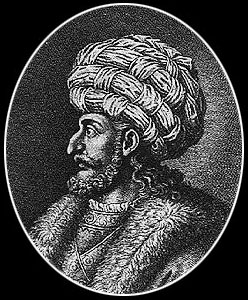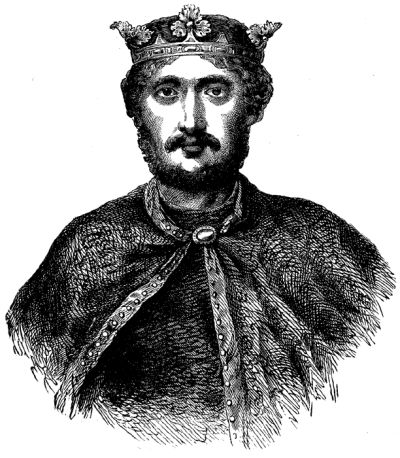The Third Crusade
In 1174, a Kurdish Muslim by the name of Salah Ad-Din Yusuf Ibn Ayyub came to power in Egypt as Sultan, after the death of his lord, Nureddin. This man, an excellent military commander with considerable administrative and diplomatic talents, soon expanded his territory into Syria, northern Mesopotamia and Palestine. By 1186, all these areas were under his banner. By 1187, the man who became known to the world as Saladin had successfully attacked and defeated Jerusalem, prompting Pope Gregory VIII to issue a call for the Third Crusade in the same year.
The call was answered by Richard the Lionhearted of England (first English Crusaders), Philip II of France, and Frederick Barbarossa of Germany. Barbarossa’s expedition got off on an inauspicious start; his army watched him drown in the river Saleph on his way to Jerusalem. Perhaps the 70 year-old Barbarossa should have been more careful. The German army was the largest Crusader army, and with the death of Barbarossa they disintegrated, some returning home and some joining the other Crusaders. Once again, the Crusaders arrived in the Holy Lands a fragmented and bickering bunch.
Of all the Crusader kings, Richard the Lion-hearted stood out. He was a good field commander and had some mild chivalrous qualities, even though the concept of chivalry didn’t exist in Europe at the time (it was an Arab invention). He was not a generous man, though. Nevertheless, his prowess in battle meant that Saladin, with many chivalrous qualities of his own, considered him a worthy opponent.
The Crusaders first attacked Acre in 1191, which eventually surrendered after a long siege. However, the Crusaders immediately broke into argument after the capture of the city, causing Duke Leopold of Germany (now in charge of the German Crusade) to leave the Crusaders in anger, and Philip II to return to France due to poor health. Richard was now in charge of the Crusade, and his immediate demands to the city of Acre and to Saladin was to give over two thousand prisoners, to return the True Cross, and to pay two hundred thousand gold piece. Saladin had the first two, but not the latter, but he was honour bound to fulfill the duty and so went about it as quickly as he could. When proceedings were too slow, Richard executed 2700 Muslim men, women and children outside the city walls of Acre as payback.
Richard decided to march south, and showed signs of being the first Crusader king with a clue. Not only did he keep close to the shoreline to enable food and water supplies, but he forbade his knights to be lured away into ambushes by Turkish light cavalry. This ensured he was able to fight off continual attacks, and eventually captured Arsuf and Jaffar. However, disaster at home struck. Richard finds that his brother John was plotting against his claim to the throne with Philip II of France, and ended up having to forge a 3-year treaty with Saladin so he can return home and put things back into order. While travelling back to England, he was captured by Duke Leopold in revenge, and was only ransomed after 2 years. He died when he was 41. Saladin died a year after he signed the peace treaty with Richard.
Richard the Lion-heart came to be known as one of the greatest Crusader kings (though I believe that title should go to Frederick II of Germany), and the Third Crusade also gained some territory for the Frankish kingdoms. However, it was still a failure by the terms of the Crusades as it failed to capture Jerusalem. If Richard had a larger force he would have been able to do it, since at the start of the Crusade, Saladin was already aged and was not in his top form. However, a more lasting legacy of the Third Crusade is probably the figure of Saladin, who was one of the very few Arabs to be thought of in such a positive light by both Crusaders and Muslims.
To Be Continued…


